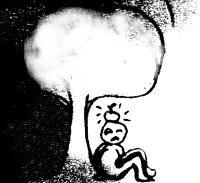Abstract
Mobile charged defects, accumulated in the domain-wall region to screen polarization charges, have been proposed as the origin of the electrical conductivity at domain walls in ferroelectric materials. Despite theoretical and experimental efforts, this scenario has not been directly confirmed, leaving a gap in the understanding of the intriguing electrical properties of domain walls. Here, we provide atomic-scale chemical and structural analyses showing the accumulation of charged defects at domain walls in BiFeO3. The defects were identified as Fe4+ cations and bismuth vacancies, revealing p-type hopping conduction at domain walls caused by the presence of electron holes associated with Fe4+. In agreement with the p-type behaviour, we further show that the local domain-wall conductivity can be tailored by controlling the atmosphere during high-temperature annealing. This work has possible implications for engineering local conductivity in ferroelectrics and for devices based on domain walls.
